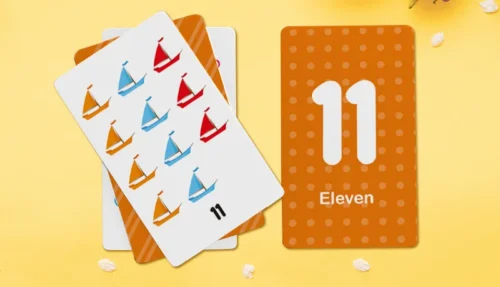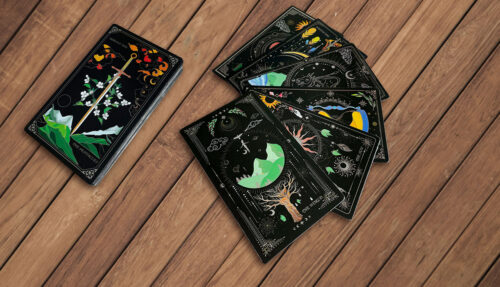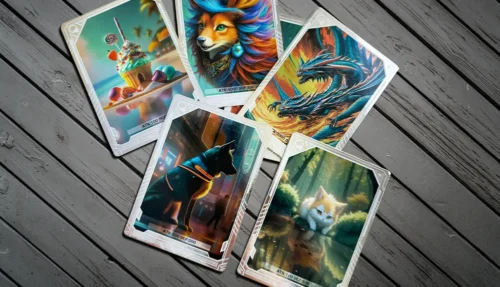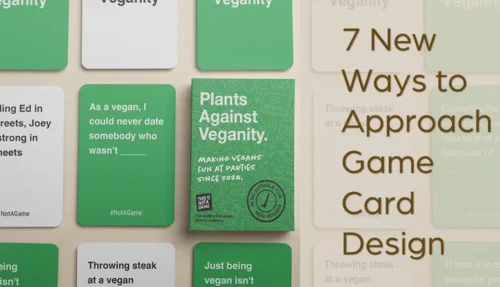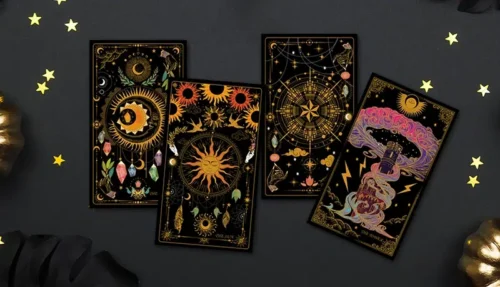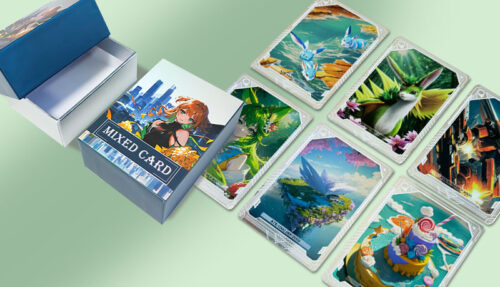Do you want to design, create, and sell your own custom card game? We've been helping mainstream publishers and independent creatives to create unique custom card sets for over 25 years. Here, we share everything you need to know to get started.
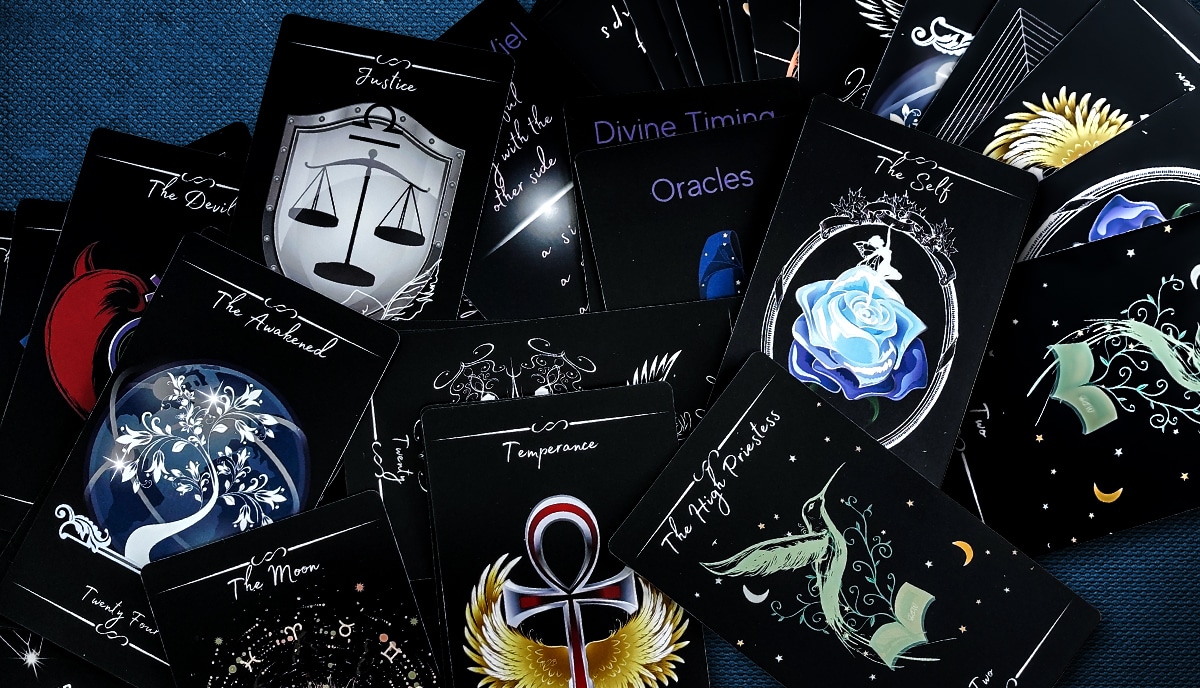
In today’s gaming landscape, custom card sets have become increasingly popular. They’re colorful, portable, flexible, collectible, and affordable. Whether you’re a keen gamer looking to create a unique deck for use with a small group of like-minded enthusiasts at your local club or an aspiring game designer interested in self-publishing a card game for profit, the possibilities are endless. This helpful and easy-to-understand guide will walk you through all the fundamentals of designing and self-publishing custom card sets, providing valuable insights into the market, game design principles, and effective marketing strategies to get you started. So let’s dive in and explore the exciting world of custom card game design!
Understanding the market for custom card sets
Before embarking on your journey to create custom card sets, it’s essential to understand the market and identify potential opportunities. Custom card sets have gained significant traction in recent years, thanks to the growing demand for unique and personalized gaming experiences. Now, that’s great if you want to self-publish and sell a custom game. It’s also a challenge, because it means that the marketplace is more competitive than ever. But whether it’s a themed deck for a specific hobby, a deck designed for a niche audience, or an original family game, if you do your research, you’ll find there’s a market waiting to be tapped into.
To start, conduct thorough market research to identify popular trends, niche interests, and potential target audiences. So what does that mean? It means joining as many online forums, gaming communities, and social media platforms favored by gamers as you can. Get involved and chat with other gamers and game designers. This should be a lot of fun, but you need to approach it with a business perspective. Make notes and try to gather insights and feedback from potential players. For example, try to discover:
- What themes and styles of card game are most popular
- The age groups and range of players for different games
- Where people buy their card games and how much they pay
- What other interests, hobbies, and activities are they interested in?
- Where do they live?
- What is their educational level? (high school, college, higher degrees)
- Where do they play and with whom? (alone, a small group of friends, at a game night or club, at conventions and meetups)
- What card games are less well-known but have a hardcore dedicated following?
- What are the most popular mechanics for card games people enjoy?
- How long do the most popular games last?
- How many players can be involved in a single game at one time?
You may well come up with many more questions to which you’ll be able to find the answer by doing thorough market research, but these should get you started. But why go to all this trouble? Well, this information will help you understand what people do and don’t like, what kinds of themes have the strongest appeal, which mechanics run smoothest, and many other factors which you can use to create custom card sets that resonate with your target market and stand out in a crowded gaming landscape. You should also play as many card games as you can – not just your favorites or the most popular – so that you get firsthand experience together with an insight into how certain games could be improved or if there’s a gap in the market: a potential game that people would love but doesn’t yet exist.
Choosing the right game type for your custom deck
Once you have completed your market research, it’s important to get a clear idea of the game type that best suits your theme, style, and game objectives. There are various game types to consider, each offering unique gameplay experiences. Here are a few popular game types to explore:
1. Traditional playing card games
You needn’t always innovate from scratch. Bringing your own special “twist” to traditional games can be a great way to get started with designing and self-publishing your own custom card set. Traditional playing card games like Poker, Rummy, and Bridge have stood the test of time and are also in the public domain. Designing a custom deck for these games allows you to infuse your own style and theme into classic gameplay.
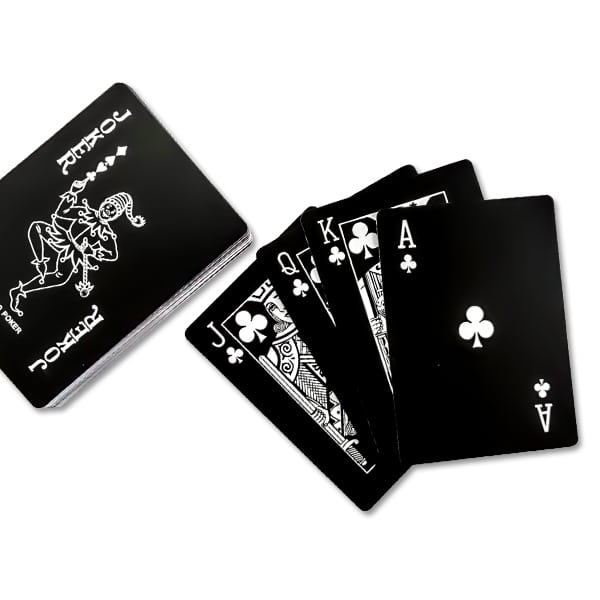
2. Collectible card games (CCGs)
CCGs, such as Magic: The Gathering and Pokémon, have a dedicated fan base. Creating a custom CCG allows you to introduce new mechanics, characters, and strategies to the genre while building on the popularity of these successful predecessors. CCGs are also a smart business move as a self-publisher as they allow you to keep introducing – and selling – booster packs, special edition card sets, add-ons and more. But it’s a lot more work. You’ll never get away with producing something too similar to a preexisting game – and you could risk breaching copyright if you try – so you’ll really need to get super creative if you choose this route and build everything up from scratch.
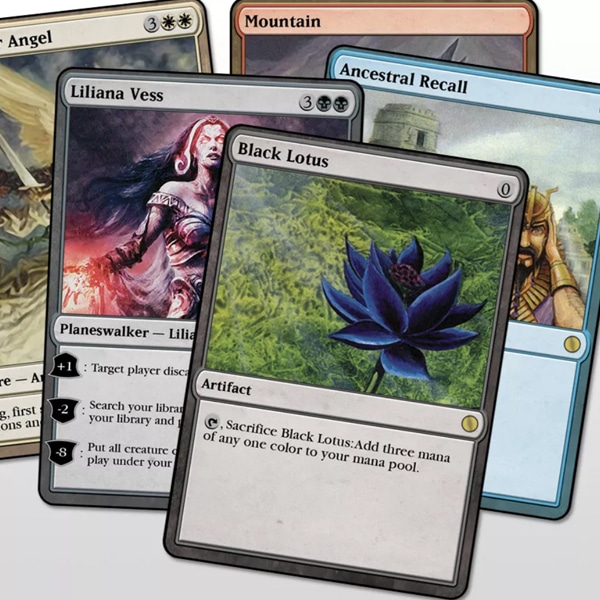
3. Deck-building games
Deck-building games like Dominion and Legendary offer players the opportunity to construct their own decks throughout gameplay. Designing a custom deck for this genre allows for endless possibilities and strategic depth. And again, you get plenty of opportunity to upsell on expansion packs and new editions if your original game proves popular.
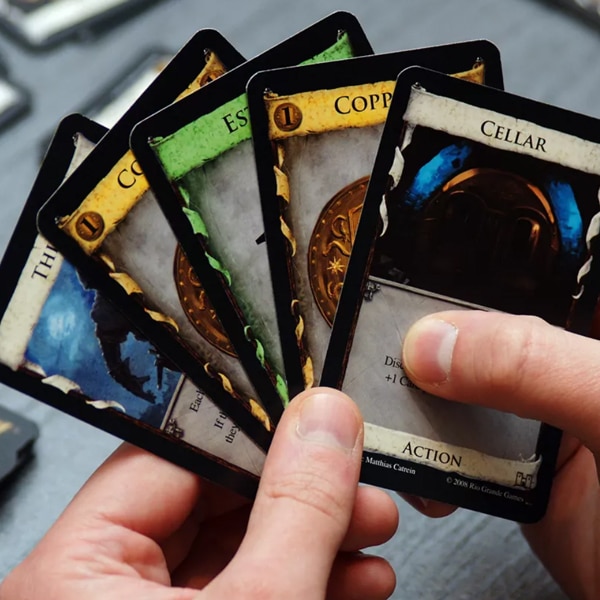
4. Party and social deduction games
Party and social deduction games like Werewolf and Avalon are perfect for larger groups of players either gathered around the kitchen table or at a game night, meetup, or convention. Designing a custom deck for these games lets you create unique roles, abilities, and narratives tailored to your specific theme and targeted to your audience. You can also introduce elements of role-play into these games and they can appeal to a wide spectrum of ages depending on the specifics of your design.

5. Educational and Trivia Games
Custom card sets can also be used effectively for educational purposes. But don’t fall into the trap of thinking that an “educational” game need be dull! Many of the most successful sports or general-knowledge based card games are educational and informative as much as they are fun to play. You have a great opportunity to share knowledge and encourage learning in any field through your custom card game. Designing trivia or educational games allows you to impart that knowledge while engaging players in a fun and interactive way.
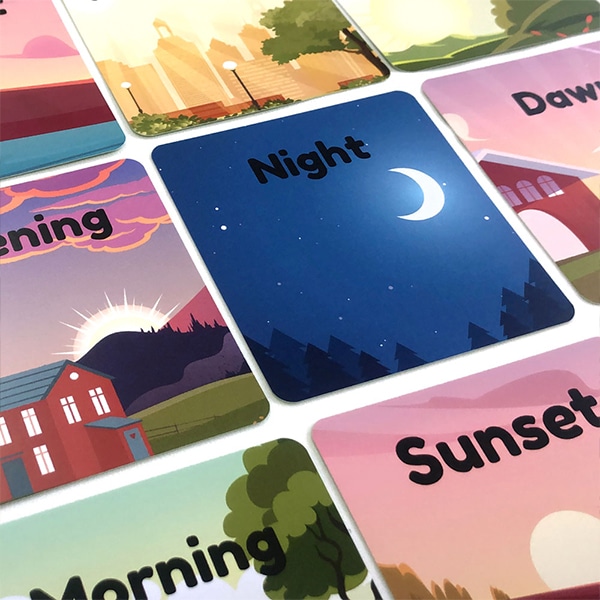
Principles of card game design
So, let’s say you’ve had fun doing lots of market research and playing a ton of games and you’ve got a good idea of the game type that would best match your ideas. All that experience has inspired a plethora of great ideas for your own custom card set. But designing a successful card game requires a solid understanding of the fundamental principles that make a game engaging and enjoyable. Here are the key considerations to keep in mind when designing your custom card game:
1. Define the aim and mechanics
Every card game needs a clear aim and well-defined mechanics. Determine the goal players need to achieve in your game—also known in the industry as “the win condition”—and the actions they can and can’t take to progress towards that goal. Consider the balance between luck and strategy, as well as the level of complexity you want to incorporate into your game. You’ll need to think about the number of players, the order of play and how it’s determined, how many actions each player can take in a single turn, and so on.
2. Create unique gameplay mechanics
When designing a board game, the possibilities for mechanical innovation are quite limited and you need to differentiate your game from others more by a unique theme, style, and story. But with card games, you have more opportunities to introduce novel ideas into how the game is played. Don’t force it just for the sake of it, but give yourself time to experiment with innovative gameplay mechanics. Try out new ways players can interact with the cards and each other. Whether it’s a drafting mechanic, deck-building, unique card abilities, the option to form alliances, cooperate toward a common goal, or an element of randomization, strive to create a memorable and engaging gameplay experience that’s both understandable, functional, and logical, but also surprising. You can also consider introducing non-card components into your game, such as dice, counters, or even a placement board, for example.
3. Test, iterate, and refine
As with any other game, playtesting is crucial for refining your custom card sets. Gather a group of playtesters and observe their experiences and feedback. Use this feedback to make iterative improvements to your game, ensuring a balanced and enjoyable experience for players. We can’t over-emphasize the importance of this step. No professional (i.e. saleable) game was ever brought to market without months or even years of rigorous playtesting.
Start with friends and family but also look for opportunities to test play with people you don’t know. Try your local game store, club, and meetup, for example; go to conventions and put your game up for testing there; you can also advertise for game testers on your social media or through your crowdfunding platform if you’re using one to finance the production of your custom card game.
Whatever way you find your playtesters, give them ample opportunity to give the game a fair trial, ask them questions, and listen to their feedback. Then take plenty of time to reflect on what went well for them and what they didn’t enjoy. Use that vital information to improve your game until it’s as close to perfect as it will ever be. Only once you’re confident that you have a great game that works seamlessly and is great fun to play should you move on to designing the actual cards – the artwork, layout, paper, style, size, finishing, and boxing options that will bring your custom card set to life.
4. Art and graphic design
The visual appeal of your custom card sets plays a significant role in attracting players. While if you have the skills, you can create the artwork and layouts yourself, otherwise it’s always worthwhile to engage the services of a professional artist and graphic designer to produce high-quality artwork and graphic design that aligns with the theme and tone of your game. Remember that, depending on your game, that each card in your custom set will probably need several components:
- The background artwork
- The key illustration (character, treasure, power, skill, action, etc.)
- Title and text (naming the card, describing actions or penalties related to it, etc.)
- Numbers and codes
- Possibly rules and instructions for that card
- Special effects such as holograms or metallic stamps
We recommend using Adobe Illustrator and InDesign to create your card designs and prepare the files for offset printing. You’ll need to know about bleeds, trim lines, safety zones, and layers, for example, to get your files ready for printing. If you’re employing a professional designer, they’ll take care of all of that. If you’re doing it yourself, talk to us. Our expert in-house designers will be delighted to advise, support, and assist you at every step.
5. Simplicity and accessibility
While unique mechanics and complex gameplay can be exciting and will help you create a custom card set that’s original and surprising, it’s important to strike a balance and make sure your game remains accessible to your audience and intuitive to understand and play. Aim for simplicity in rules and mechanics, allowing players to grasp the gameplay and start having fun. No game should be so complicated that it takes longer to read the rulebook than it does to play the game itself!
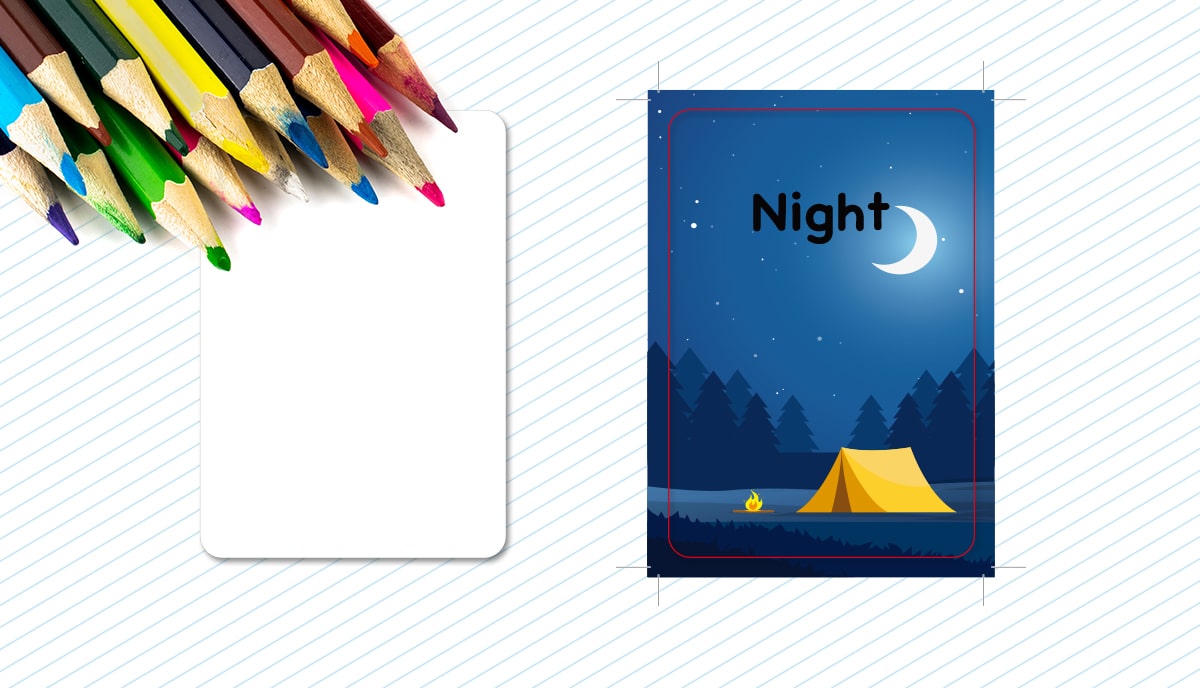
Self-publishing your custom card game
Now that you have a solid understanding of game design principles, the game type you want to pursue, and how to design and layout your custom card set ready for printing, it’s time to explore the process of self-publishing your card game. Self-publishing offers game designers the freedom and control to bring their vision to life. Here are the key steps involved in self-publishing a card game:
1. Create a Prototype
Start by creating a functional prototype of your custom card set. In the early stages, you can hand make these with cuts of card and felt-tip pens. Seriously, before you’ve done any playtesting at all, there’s no point investing time and money in superior design when you’ll almost certainly need to change things out. Once you’re getting closer to having everything in place, you can create a next-level prototype using card design software like Adobe InDesign or Illustrator and just printing out a single, full-color deck on paper using your home printer. Playtest the prototypes extensively to refine gameplay mechanics and adjust any imbalances. Only once everything is in place, should you complete the designs and prepare your printing files.
2. Find a Manufacturer
When thinking about whom to get to print your custom card sets, you need to make a careful decision. For example, if you just go with your local digital print store it is hard to get a result that lives up to your expectations. Why? Nothing against your local digital print store; they’re probably not only lovely people but your go-to choice for short runs of leaflets, flyers, promotional handouts, show posters, and booklets. But they won’t have the range of card and paper stocks, not to mention the detailed reproduction capacity of an offset printer, or the beautiful varnishes, spot UV coatings, metal stamping, or holographic card printing that you’ll need to elevate your product to the professional level. And they won’t be able to make you a custom printed box, either.
So, what’s the solution? Choose a traditional offset printer with specialized experience in card, game, and packaging printing and manufacturing. Of course, we must mention ourselves: QinPrinting. Why not? We’ve spent the last 25 years and more building a solid worldwide reputation for excellence in the field, working with major publishers and independent creatives alike. We offer an end-to-end service with unbeatable, personalized customer support, unrivaled pricing, the latest technology, an environmental commitment, and worldwide delivery. We honestly don’t think you’ll find better. But check out other options. We’ll still be here for you when you come back!
3. Define your production plan
While creating a brand new custom card set for your game is a lot of fun and exciting to do, if you’re going to take the next step and self-publish your deck to make a profit, then you’ll need to get serious about how you’ll fund your initial research, build your prototype, find playtester, develop your product, design and print the final version and box, and then move on to distribution, sales, and promotion. You’ll need to know the number of decks you want to produce, the printing specifications (size, card and paper types, printing techniques, special effects and finishes, and box structural design and printing, for example) and any additional components like rulebooks, counters, dice, or game boards that your specific game may need. If you work with us, your dedicated named consultant will work with you – if you wish – to work out an effective and realistic production plan.
If you’re running a crowdfunder on a platform like Kickstarter, you’ll need to factor in your supporter updates – blogs, social media posts, video releases – and define when you’ll have reached each of your goals and stretch goals. While this can seem complex, once you break it down into step-by-step units, it’s all doable. If you want to be successful, it’s vital that you don’t skip this step. Once you have a calendar and production schedule mapped out, everything else that follows is based on that and it will take away a lot of the stress from the production process itself.
4. Design eye-catching packaging
You need a box for your custom card set, right? You can’t just bung it in a bag or tie it with a rubber band! Well, you could, but… Packaging plays a crucial role in attracting potential buyers, communicating the theme and style of your game, and showcasing your beautiful artwork. This is another reason it’s unlikely your local digital print store won’t cut the mustard for this kind of project. You’ll need to work with an offset printer to design visually appealing and informative packaging that showcases the uniqueness of your custom card sets. We offer a complete, tailored service from designing the perfect structure for your box, to helping you choose the optimal materials for your needs, and building, printing, loading, and wrapping your finished boxed card sets for you.
5. Develop a marketing strategy
We’re mentioning this as the last-but-one item in this section, but really you need to plan and set up the infrastructure for your marketing strategy in advance. The earlier, the better. Marketing is essential for creating awareness and generating sales for your custom card sets. Establish an online presence through a website, blog and/or social media platforms such as Facebook, Instagram, TikTok or whichever your market research has shown you that your target audience prefers. You can also make use of targeted advertising, influencer partnerships, and engaging content to reach your potential buyers. Consider attending gaming conventions and events to showcase your game and connect with enthusiasts.
6. Launch and distribute your game
Once your custom card sets are ready for production, launch your game through online marketplaces such as Amazon, Etsy, eBay, and more, crowdfunding platforms like Kickstarter, and by establishing relationships with local game stores. Developing a distribution strategy to make sure your game reaches the hands of eager players is one of the greatest challenges you’ll face in the entire process. But with patience, perseverance, a willingness to make a few mistakes and learn from them, you’ll get where you want to go.
Of course, if you have the funds, you can also opt to buy the services of a local, national, or international distribution service. Most charge an upfront fee to get things set up and then a percentage of your sales going forward –much like a book agent. The right distribution deal can boost your chances of making it and if the distributor with whom you work is good at what they do, they should pay for themselves in the long run.
Still, you can do a lot all by yourself with hard work and determination. Several self-published game designers have done very well using an exclusively DIY approach to networking and marketing their games. Which path you choose is a personal decision that only you can make.
Maximizing the success of your custom card sets
Unless you have the luck of the gods – and most of us don’t! – then you’ll need to keep working to market and promote your custom card game long after your launch date. Very few games indeed “take off”and sell themselves. To maximize the potential success of your custom card sets, you can use several ongoing strategies.
• Keep engaged with your community
During your research and development phase, you should have built a powerful community around your game and gathered supporters via your crowdfunding and social media platforms. Post-launch, it’s vital that you don’t just “take the money and run”. Continue to interact with your community by engaging with players, encouraging feedback, hosting contests, soliciting reviews, and doing Q&As, live streams, and other events on and offline.
• Offer expansion packs and updates
Keep your game fresh and exciting by offering expansion packs or updates. This allows players to expand their custom card sets and helps make sure they have continued interest in your game. Add-ons, expansion packs, stickers, and more are standard parts of modern card game design and provide endless opportunities to extend the life of your game.
• Organize tournaments and events
You needn’t have a huge budget or a national outreach to organize tournaments or events centered on your custom card sets. You can run events in your local independent gaming stores, libraries, even public spaces like parks and gardens. This not only creates buzz but also provides an opportunity for players to showcase their skills and connect with other enthusiasts which in turn further builds your community and the profile of your game.
• Collaborate with influencers and reviewers
Reach out to influencers and reviewers in the gaming community to showcase your custom card sets. Their endorsement and reviews can significantly boost awareness and generate interest in your game. But remember to be polite and professional when you approach them and don’t expect to get something for nothing. They’re business people and expect you to offer them something valuable in return for the exposure and support they offer you. So, offer them a free guest post on your blog, for example, or a shout out on your YouTube channel. If you have a large email list, you can send out a booster ad for them to all your subscribers. Working with influencers in your field is a great way to get the word out, but it’s almost always a “You scratch my back and I’ll scratch yours” arrangement.
• Listen to feedback and evolve
Continuously listen to player feedback and evolve your game to meet their expectations. Note suggestions for improvements, expansion ideas, and potential collaborations. You can do this through monitoring conversations online, by running quizzes and surveys, and just by keeping your ear to the ground. But being open to upgrading and developing your game in response to how players react to it is always a smart move.
Designing and self-publishing custom card sets offers a thrilling opportunity to bring your creative vision to life. By understanding the market, adhering to game design principles, and effectively marketing your game, you can create a successful and engaging gaming experience. So embrace your creativity, dive into the world of custom card game design, and let your imagination run wild. Start designing your own custom card sets today and let the games begin!
Keen to get started? Let's talk!
If you want to create custom card sets for a game to self-publish and sell and you need 100+ decks, a smart rulebook, and a custom printed box to package it all in, then our world-class offset printing services provide a cheaper option than digital printing along with superior quality paper stocks, print, and finishes.
At QinPrinting we’ve been making custom card sets, rulebooks, and stunning printed boxes for over 25 years. We work with businesses and independent creatives alike. Chat to us today to discuss your ideas. One of our expert printers with experience in card design and manufacture will be happy to help and advise you. Or if you’re further along in the process and you have files ready to go to press, we’ll be delighted to give you an unbeatable, no-obligation quote. Let’s talk!





